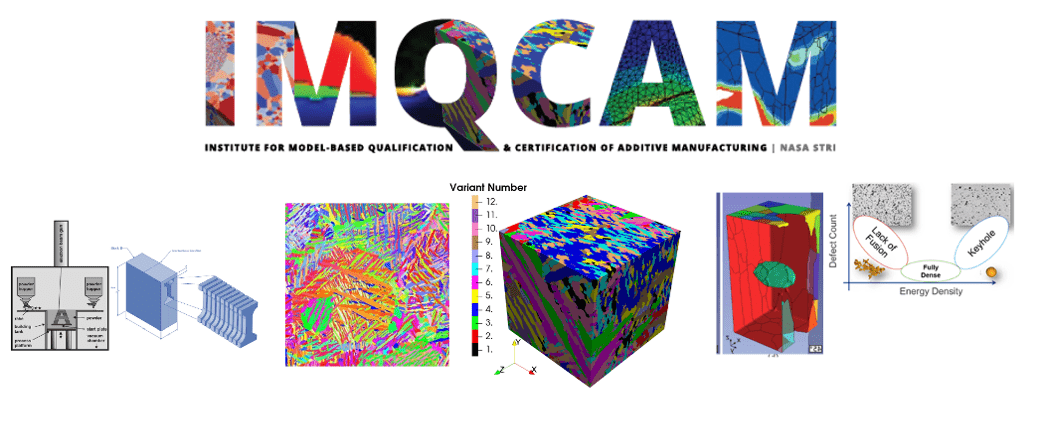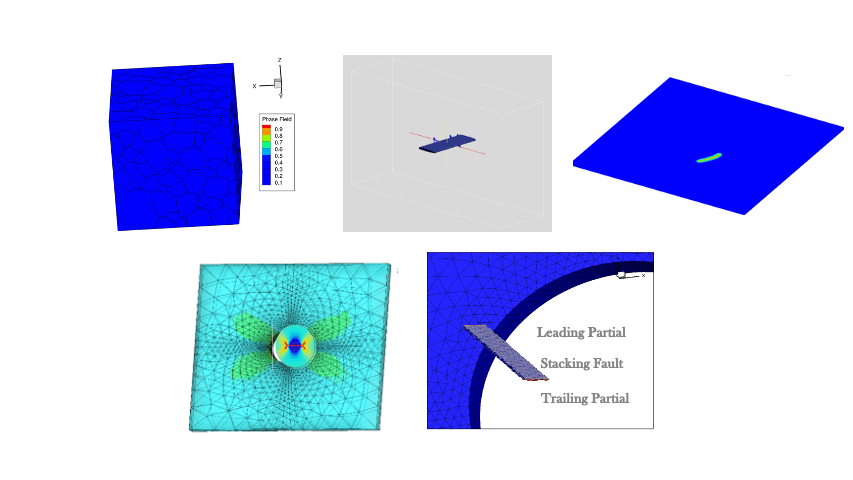Fields of Research
Computational modeling coupling Computational Mechanics and Computational Materials Science, with emphasis on multi-scale structure-materials modeling and simulations, multi-physics modeling and simulation of multi-functional materials, materials characterization, process modeling, emerging fields like Integrated Computational Materials Engineering (ICME).

Specific areas of activity include:
-
Additive Manufacturing: Digital Twin for process-microstructure-performance and life
-
Spatial and temporal multiscale, multiphysics modeling method development
-
Modeling failure and fatigue in metals, composites, and multifunctional materials
-
Coupled phase-field crystal plasticity modeling for heterogeneous materials
-
Fatigue and failure modeling and damage sensing of engineering components
-
Data-driven methods, Machine Learning and Uncertainty Quantification
-
Synthetic microstructure builders, statistically equivalent RVEs
-
Atomistic-continuum multiscale modeling of polymeric and metallic materials
-
Novel computational model development
A few of the notable contributions are:
Certification and Qualification of Metals Additive Manufacturing through a Digital Twin

Machine Learning Enabled Multiscale Model Fatigue Life Prediction in Metals and Composites: A Digital Twin Platform

Crack Propagation in Polycrystalline Metals Crystal Plasticity-Phase Field Model with Crack Tip Enhancement by Atomistic Simulations

Machine Learning-Enabled Computational Modeling Framework for Virtual Damage Sensing in Multifunctional Materials

Multiscale Modeling Including Machine Learning

